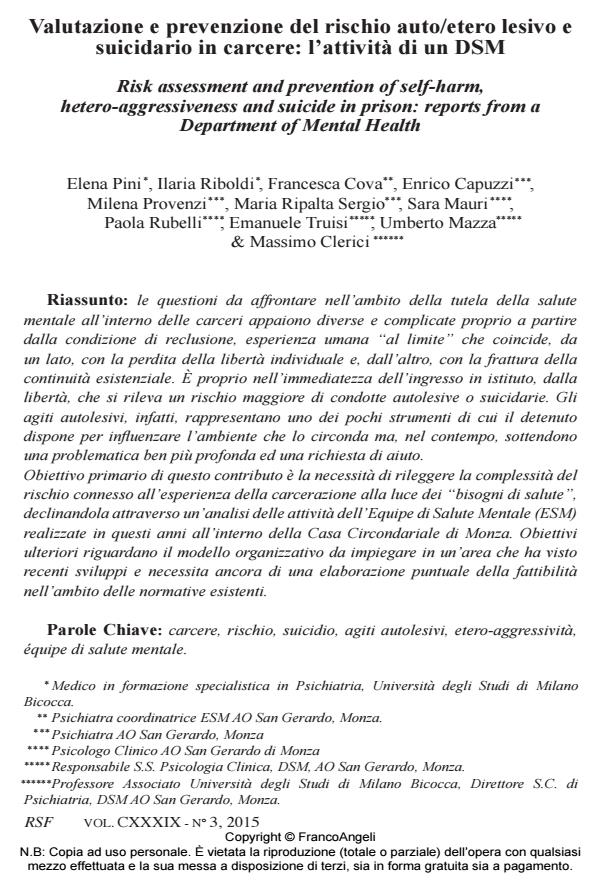Risk assessment and prevention of self-harm, hetero-aggressiveness and suicide in prison: reports from a Department of Mental Health
Journal title RIVISTA SPERIMENTALE DI FRENIATRIA
Author/s Elena Pini, Ilaria Riboldi, Francesca Cova, Enrico Capuzzi, Milena Provenzi, Maria Ripalta Sergio, Sara Mauri, Paola Rubelli, Emanuele Truisi, Umberto Mazza, Massimo Clerici
Publishing Year 2015 Issue 2015/3
Language Italian Pages 15 P. 147-161 File size 2268 KB
DOI 10.3280/RSF2015-003010
DOI is like a bar code for intellectual property: to have more infomation
click here
Below, you can see the article first page
If you want to buy this article in PDF format, you can do it, following the instructions to buy download credits

FrancoAngeli is member of Publishers International Linking Association, Inc (PILA), a not-for-profit association which run the CrossRef service enabling links to and from online scholarly content.
To deal with mental health issues in prison is different and complicated. Imprisonment is an "extreme" human experience which involves the loss of personal freedom and causes a breach in a person’s life course. In fact, the highest risk for self-harm and suicide occurs during prison admission, self-injury being one of the few means a detainee has to influence the surrounding environment. However, selfharm highlights also the presence of underlying problems and a request for help. The authors examine the complexity of risk factors and of "health needs" in imprisonment and describe some organizational issues and problems the mental health team encounters, in the prison of Monza, after the approval of the new national law on mental health care in prisons.
Keywords: Prison, risk, suicide, self-harm, hetero-aggression, mental health team
Elena Pini, Ilaria Riboldi, Francesca Cova, Enrico Capuzzi, Milena Provenzi, Maria Ripalta Sergio, Sara Mauri, Paola Rubelli, Emanuele Truisi, Umberto Mazza, Massimo Clerici, Valutazione e prevenzione del rischio auto/etero lesivo e suicidario in carcere: l’attività di un DSM in "RIVISTA SPERIMENTALE DI FRENIATRIA" 3/2015, pp 147-161, DOI: 10.3280/RSF2015-003010